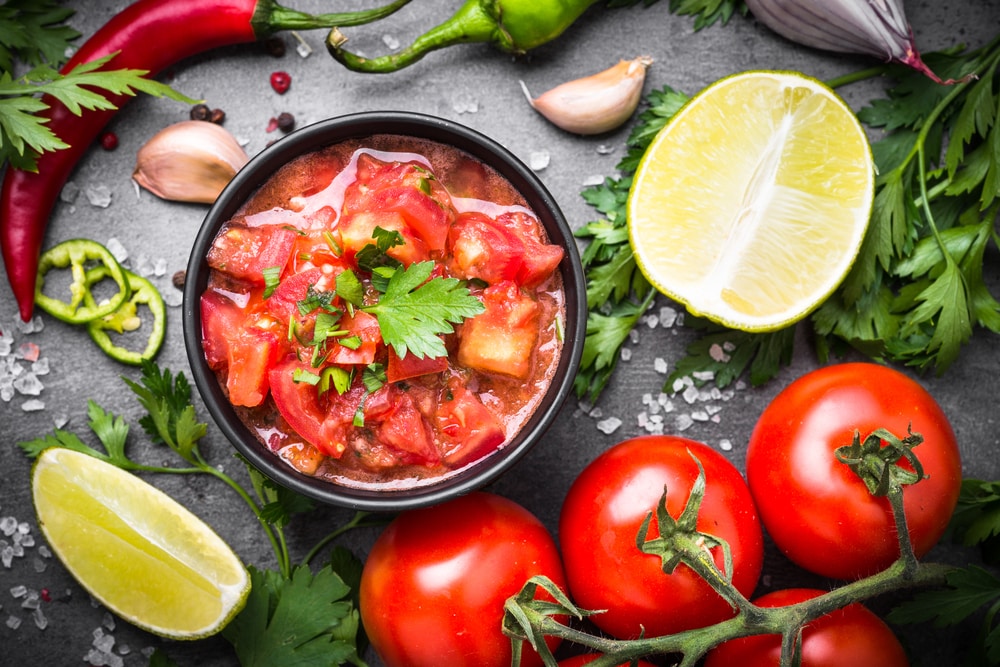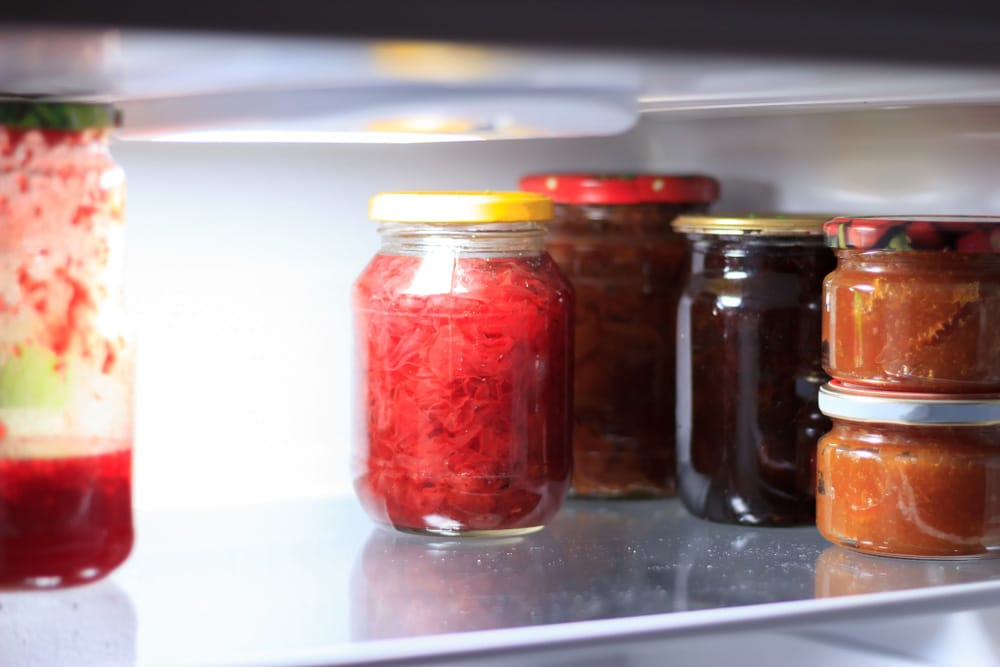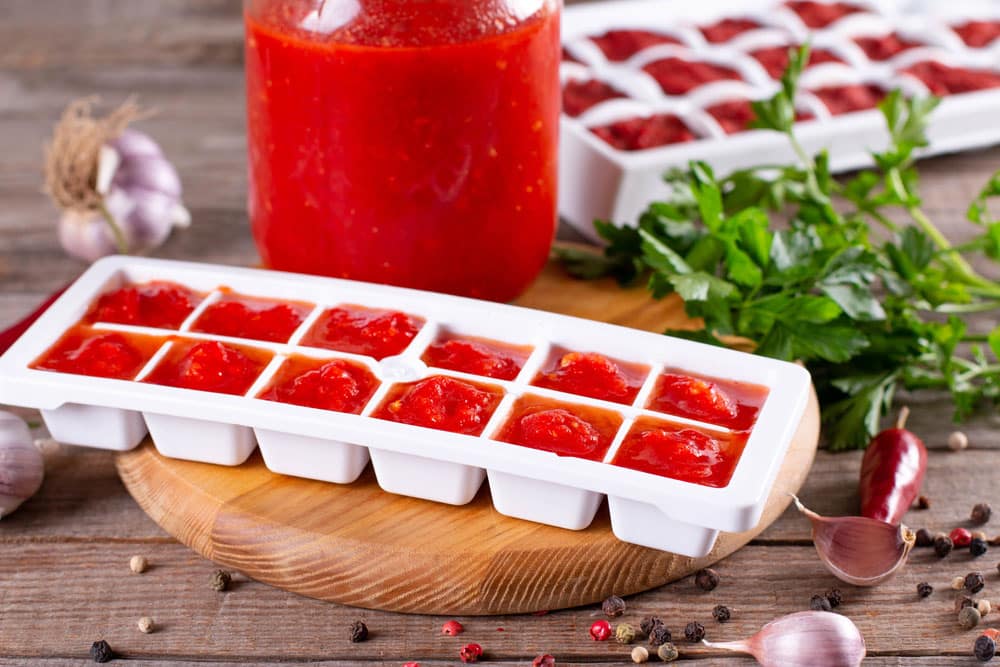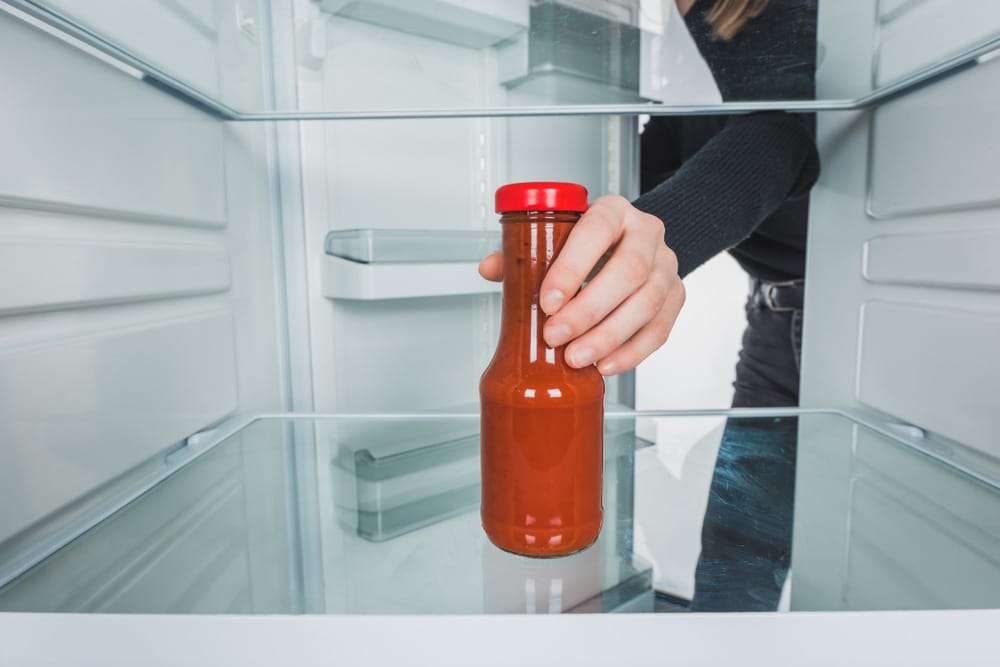
Essentially there are three ways to preserve cooked foods namely pressure canning, water bath canning and freezing. When it comes to determining the best of these options, pressure canning is by far the superior option. You will however have to buy a pressure canner.
Without a pressure canner, you will not achieve the required temperature which will leave you with spoiled food. Not using a pressure canner causes food to develop a pH higher than 4.6, which in turn can create a bacterial infection.
Additionally, a higher acidity also ruins the overall flavor. That said, water bath canning is usually considered the second-best option.
Why Is Canning Required?
Whether or not salsa is deemed a high or low-acid food, depends largely on the ingredients. Therefore when canning it’s often required to use almost-ripe tomatoes and unripe mangoes. It’s also mandatory to add some citrus to lower the pH value.
On the other hand, if you’ve made salsa with ripe, overcooked tomatoes, it’s usually best to keep it in the freezer. Without flash freezing, the salsa will remain fairly edible for up to 3 months.
How to Preserve Salsa Without Canning?
Freezing is the only true method of preservation aside from canning. Since almost every household has a freezer that’s used daily, it’s relatively easy for anyone to preserve food.
The good news is that a freezer will preserve food for months, and most of the time the food will be finished before it reaches the inevitable deadline. Additionally, microorganisms such as foodborne bacteria also need water for survival.
Placing your food inside a freezer enables it to freeze to temperatures below 10 degrees Celsius. These low temperatures then freeze the enzymes and water molecules. This creates an environment that enables bacteria to grow which in turn effectively preserves your food.
Freezing salsa has a limit of three to four months before experiencing freezer burn. Once you reheat food that has already experienced freezer burn will give you a sloppy, watery, tasteless bowl of salsa. What exactly is a freezer burn?
Essentially, freezer burn is similar to fire burn. It happens during prolonged periods of freezing when the food molecules are broken down. Once these molecules have been broken down, they can’t be restored to their original state, leaving you with a sloppy mess once it’s been reheated.
Tips to Ensure Quality Frozen Salsa
There are a few things you have to consider before freezing your salsa.
- Ditch the containers: Don’t use plastic or glass pots for prolonged freezing. Glass can break when subjected to extreme temperatures lower than zero degrees. Similarly, plastic containers are also extremely fragile when frozen. Furthermore, taking your salsa out of a plastic container will make for an hour-long hand exercise.
- Opt for plastic bags: So, if you’re not using glass or plastic containers, what will you need to use? Your answer lies in freezer bags. Doing this will allow for easy removal from the freezer and the bag. For extra convenience, be sure to divide the salsa into smaller eating portions before freezing. As a result, you won’t have to refreeze leftover salsa for a second time. Smaller portions ensure that you only reheat exactly what you need for each meal.
- Consider ice cube trays: Some expert salsa makers also recommend opting to use ice cube trays if you only have small quantities to freeze. For the most part, this method is more effective for smoother salsas.
- Vacuum sealing: Another way to ensure your salsa stays bacteria-free is by vacuum sealing. Simply use a vacuum sealer to remove the air from your plastic bags. Having a vacuum seal before freezing will allow you to keep the salsa’s integrity for longer periods. Additionally, vacuum sealing also makes the bags more compact, ensuring they don’t take up too much space in your freezer.
- Use less water: Make the salsa into a thick sauce by cooking with less water. Add a few tablespoons of tomato paste to increase the thickness. A packet of thick salsa will freeze a lot better than a salsa swimming in water. You can also add tomato paste to the mixture to make it thicker.
- Room temperature: Salsa, like any other food you want to freeze, needs to be cooled down to room temperature before freezing. This usually takes about an hour. Freezing hot or warm salsa will cause condensation to form at the top of your container or freezer bag. This will in turn become ice and create a freezer burn.
How Long Does Fresh Salsa Last in the Freezer?
Salsa can last in the freezer for about 4 months. This is of course if you follow the above guidelines and ensure that your salsa is placed in the freezer as soon as it’s cooled down. Be sure to label your salsa bags!
How to Defrost Frozen Salsa
When it’s time to defrost your salsa, it’s important to take out only as much as you’re going to need for that specific meal. To thaw, simply place the container, freezer bags, or ice cube trays into the fridge for about 24 hours to drain off the excess liquid.
If you’re using freezer bags, be sure to place them in a tray or plate before placing them in the fridge. After all, you don’t want to make a watery mess in your fridge! It’s crucial to never defrost frozen salsa at room temperature or in warm water.
This is because the outer layer will defrost first causing the salsa temperature to drop to the “danger zone” where bacteria start growing and multiplying. Placing your salsa in the fridge will let it defrost equally without creating bacteria.
Final Thought
There’s no denying the popularity of a well-prepared salsa dish. Aside from tasting delicious, it’s also made up of a range of healthy ingredients. To ensure your salsa stays fresh and delicious after eating, be sure to follow our simple but tried and tested tips!



